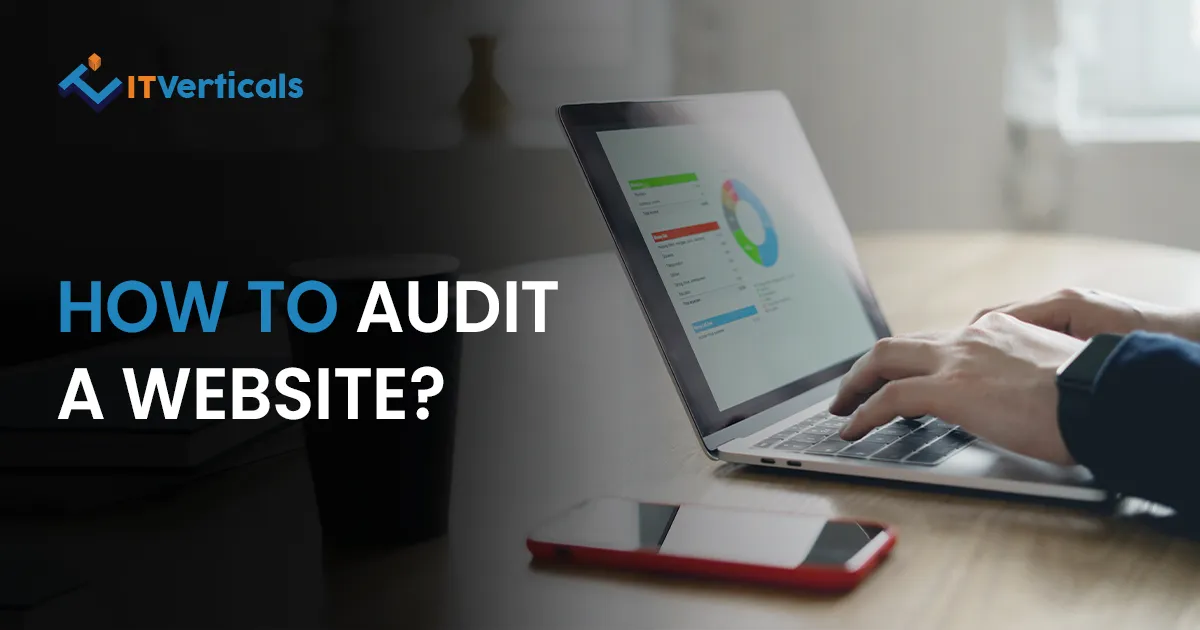
- admin
- April 3, 2025
- No Comments
A website audit is a vital task you perform during or after your website launch. After all, without an audit, you cannot gauge your website performance properly. You have to be aware of how your website is performing in the SERP and what changes you need to impose on time in this continuously changing era while keeping in mind your rivals should not crossover you.
So, get yourself ready to acknowledge what is website audits, their pros, how they work, their checklists and their types. In the end, you will be well familiar with the value of website audits.
What is Website Audit?

A website audits is an in-depth examination of your site performance, structure, and content from its technical or back end sides to its front end sides. You will inspect that everything is working as per the SEO current guidelines that can attract and convert your target audience. Basically, you are checking the health of your site consuming all six details:
- Website design: Layout, graphics/visual hierarchy, UI design, menus and navigation.
- Technical SEO: URL structure, site speed, crawlability, and indexing and mobile-friendliness.
- On-page SEO: Right keywords, precise meta tags and meta description and researcher intent content.
- Backlinks: Website link profile such as the quantity and quality of backlinks.
- Rivals research: Website comparison with the competitors exist on your industry.
You have to keep yourself updated with these details and modify them when needed to survive the competition while keeping up with the frequent SEO changes from Google or Bing. A website audit can stop you from falling into this flood.
Pros of Doing a Website Audit

A website audit boosts search engine visibility by fixing errors. When you time to time perform a website audit, you will be aware of yourself with new changes and how to tackle them and prepare to set your website on top of google ranking.
As an example, you will access the content relevancy and usefulness means the content must be relevant to the brand offering and must be useful for the reader, giving them some value.
You will improve your website design by understanding the fonts and color psychology. You need to adjust your website colors and fonts as per the niche you are working on for cohesive UX. One more point: Certain design elements (fonts, hierarchy, negative space, color, shape, icons, layouts and textures) get outdated, and you have to replace them all from your site and revamp your site with new design elements. Note the mixture of simplicity with fanciness allures viewers.
Also, a website audit is a door to open selling opportunities. When you do website audits, you found certain glitches and repair them as soon as possible. For example, your ecommerce store category page needs visual improvement and layout structure changes. You will A/B test some market campaigns and evaluate which performs best and maximize your sales.
How to Performs a Website Audit?
Access Site Page Speed Performance
Pages that takes more than 2 seconds to load can slows down your site domain authority of your full site. So, begin your auditing by accessing the speed of your website pages. Review the page speed scores. Since the 2010 Google updates, google give priority to those sites that has high page speed scores. Since June-August 2021 Google Page Experience Update (source) regarding google core web vitals, this becomes even more important.
In this regard, a website analytics are a handy tools that helps to gauge your website performance. Google analytics, Adobe Experience Clouds, Ahrefs, Moz are great examples of these website audit tools.

Once you are aware of the issues on your page loadings or other related Core Web Vitals, next you do is make the design and content changes that are impacting your site loading performance.
Keep in mind when you do a website audit, try multiples of website analytics tools for accessing your performance scores both in desktop and smartphones. Give priority to mobile-friendly page loading as google gives importance to this.

Check SEO On-Page Optimizations
You want your site to appear on the first page, which requires website SEO optimization. A website SEO audit can help you with this. You can use third-party SEO audit tools such as Ahrefs, Deepcrawl Screaming Frog, Moz and SEMrush. These are amazing tools that let you know within a short timeframe what the situation of your site is and where it’s lacking. You can easily spot the missing optimization data via an SEO website audit, including meta tags, alt tags, and canonicals.
Realize Site Content Gaps
SEO on-page optimizations website audits isn’t let you fix the bugs. You need to preform pages’ content quality checks as well as part of your website audit. Google rank your content on the bases of relevancy and usefulness.
You need to recognize the gaps in case you are not satisfied with the ranking of your sites especially of your blogs or case studies pages. Content gaps occurs when your content is not of the searchers intent. Apart from being relevant and useful, the content above all must fulfills the searchers intent. Here your competitors overcome you in case your site content is not useful and relevant.

Ahrefs is the best tool to help you identify the gaps in your content side. Use the filters of Ahrefs and play around with them, and you will explore the hidden opportunities to get the most searched keywords and topics, fulfilling the searcher’s intent. Always remember, certified SEO marketers use their own research techniques, observe and build their strategies to tackle this content part and come up with some awesome solutions to bridge the content gaps. Be the one, and the results will be beyond impressive.
Opportunities are many but as of now the best way to understand it is to get deeper into the behavioral analytics data with in your Google Analytics 4, a whole new ballgame, for all of us. Google Analytics 4 reveals the correct bounce rate, use spent timeframe of any page and user switches to other pages.

Evaluate Technical SEO Concerns
Technical SEO is as important as other website audits. Most SEO marketers face an issue of non-indexed pages or page not found i.e. 404 errors, crawl errors, broken image, redirects, broken links, robots.txt file, messy URLs, and inadequate sitemaps, outdated meta tags etc.
Such technical errors can impact your site performance. So, make sure to identify these technical issues and rework on them to allows google crawlers or bots to index al your page and categorize them rightly. This way, you get an improved website traffic.
Test User Experience (UX)
Apart from technical side, your front-end is equally play a role big in optimizing your site to rank well and convinces visitors to easily browse the site and add to cart. A struggling visitor’s in exploring the complex or messy or poor layout site frustration is legitimate.
If people find it hard to use your site, there may be problems with how it works, like slow loading times or difficult navigation. A user engagement directly affects the user experience which in turn impact your entire site authority. You can do your website audits UX in a unique way like take feedback from users how our site performs and what issues you face while navigating the site.

This approach will help your in understanding the website design issues on your website. Still the issue persists, then you should run a UX website audits by looking at the menu structure, labels, and placement of key buttons, and examining mobile usability.
Check Website Accessibility
Make sure when user visit your site, everything is visible to them from the content and visuals, to forms and buttons and everything in between them. You have to confirms that those visitors who has disabilities can also view everything.
Check all texts and their contrast, size and fonts style are legible. Some users rely on keyboards instead of mice to navigate.
All elements, like links, buttons, and form fields, must be accessible with the Tab key or arrow keys.

Show closed captions for videos and transcripts for audio content so hearing-impaired users can access the information. And include audio descriptions for videos if they contain important visual information that isn’t conveyed through audio alone.

